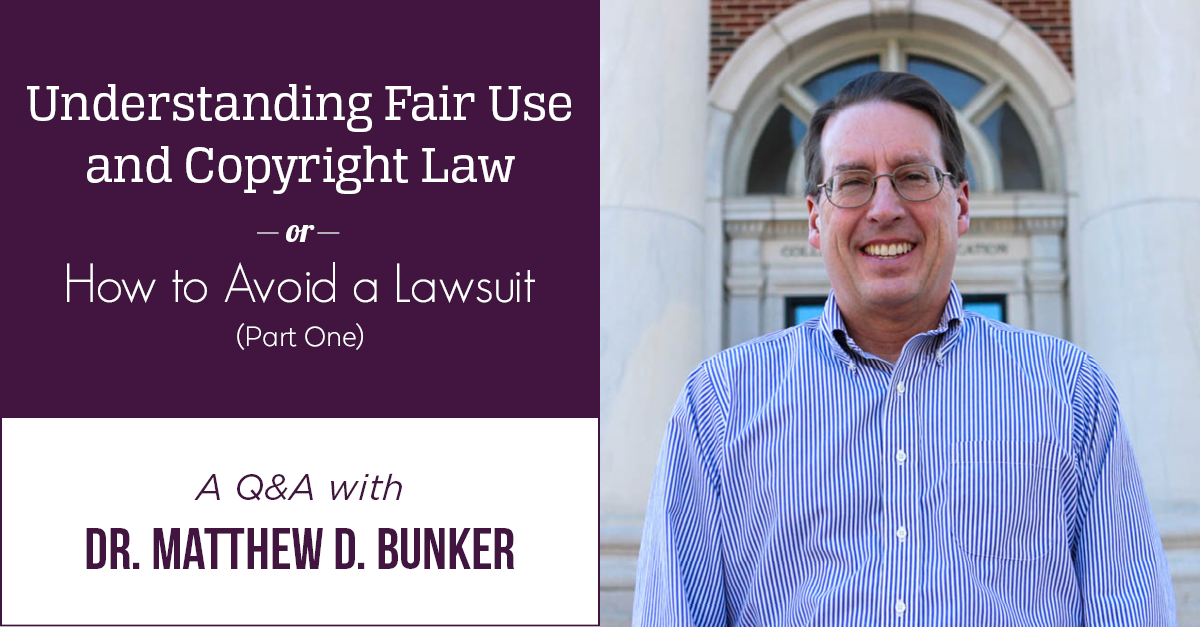
A common question we receive from clients is whether they are allowed to repost a published piece of content to their website or social media accounts. Answering questions such as this requires an understanding of fair use, a legal defense allowing a person to borrow and repurpose copyrighted works. To better understand the nuances of fair use, we decided to take it to an expert, Dr. Matthew D. Bunker. Dr. Bunker is a media law professor at the University of Alabama.
MW: What is fair use?
Dr. Bunker: Fair use is a defense that allows third parties to use copyrighted works (more likely, small portions of works) without permission or payment. It’s designed to ensure that copyright owners can’t completely wall off their works, preventing others from borrowing. Fair use serves as a guardian of free expression values in copyright law.
MW: What are some examples of fair use?
Dr. Bunker: Fair use has been held to include such things as quoting a small portion of a book in a book review, using a photograph to comment on or critique the photo, and using a small segment of a film as part of a retrospective on an actor’s life.
MW: How can a copyright holder dispute someone’s fair use claim?
Dr. Bunker: If the copyright owner disagrees with a fair use interpretation then the dispute has to be resolved by the courts. Fair use is a defense to infringement, which means that it doesn’t come into play until someone sues a borrower (i.e., a photographer sues someone for improperly using their photo). If it isn’t fair use, then you are infringing upon the rights of the copyright owner and may be liable for damages. Courts employ the fair use test, described below, to determine if the defense of fair use succeeds in a given case.
MW: What are the factors of a fair use test?
Dr. Bunker: Federal law provides several factors that courts consider to determine if a use is “fair.” These factors include:
- How much of the work was borrowed? Normally, less is better.
- Why did the borrower use the work (parody, scholarship, comment, criticism, etc.)?
- How much of the borrower’s use hurt the market for the original work (if consumers are more likely to purchase the borrower’s work instead of the original)?
- What was the nature of the original work? Highly creative works (such as novels or poems) are more protected from borrowing than are straight, factual works (such as a newspaper article simply describing an event).
- “Transformative Use” – Over the last 20 years courts have also increasingly emphasized this fifth factor, meaning if the borrower does a “value added” taking by adding new expression, meaning, or message, that use will more likely be fair. If you simply borrow a work verbatim without adding any new, creative elements, the borrowing would be non-transformative.
An important thing to note is there is generally no clear rule on when a borrowing is fair. Courts don’t analyze cases in absolute terms. Instead, they apply multiple factors in each individual case, which unfortunately creates some uncertainty as you consider whether a particular borrowing you wish to do would ultimately be declared “fair” by a court.
This first part of our two-part series was a broad look at fair use. Next week, we’ll examine some specific examples of how we as marketing and public relations professionals can apply fair use to the work we do. If you have any questions or comments about fair use please leave us a comment below.
